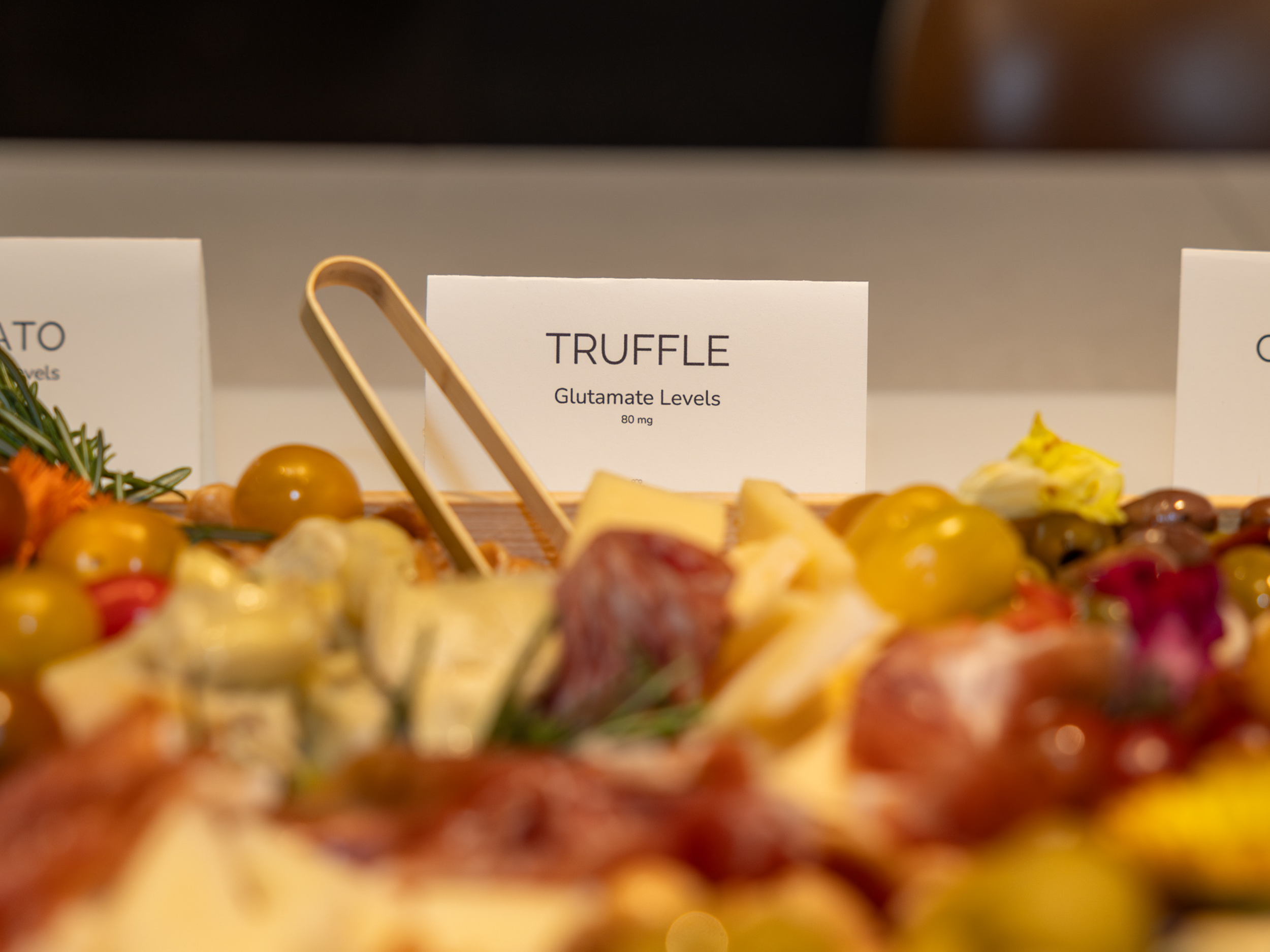Tasting with All the Senses
When you’re in a restaurant, can you enjoy your meal if the ambient noise is loud or dissonant? In an era of Insta-worthy plating, do you need to be visually enticed before you take a bite? If the answer is yes, you are already engaged in ‘tasting with all the senses.’ Two or more of your senses have enhanced your ability to taste.
We’ve embraced “Tasting with All the Senses” as our methodology, intentionally connecting and sequencing each of the senses as part of the tasting experience. Sight, sound, smell, taste, touch, and time are the senses we explore in our tasting workshops with clients, a journey that is not only fun and delicious but also grows collaboration skills by enhancing discernment abilities.
Let’s walk through it!
Sight is the sense we use to survey and identify our surroundings. In our workshops, we anchor on visual cues with table setups, plating, and an emphasis on comfort from plants and light. For the tasting itself, say, a specific chocolate bite, an umami broth or a tea blend to sip, the visual is the first story- the colors, brightness or depth inform our taste expectations and engage the rest of the senses.
Listening to our surroundings, hearing our own thoughts, and discovering the sounds of tasting. The snap of chocolate, the gentle rumble of boiling water, the rustling of tea leaves, the murmurs of appreciation as others have their experiences- what we hear builds our anticipation of what comes next!
And finally, we taste, starting with a small taste to acclimate, pausing to let it touch every surface in our mouth. After seeing the tasting sample, listening to it and our surroundings, and smelling it, we are prepared for the individual and personal experience of this sample in our mouths, invoking sensations and exposing flavors that we are now poised to recognize and respond to. The basic tastes of salty, sweet, sour, bitter and umami, the extended conversations of pungent, astringent, even spicy, are all part of this taste step.
Touch in tasting is all about mouthfeel. Textures and sensations- the weight of the food or drink on the tongue and how long the flavor lingers. A beautiful chickpea salad with pickled onion, apricots and slivered almonds bound with a silky miso vinaigrette relies on the combination of textures for the enjoyment of the dish. Chocolate melts, leaving a cocoa-buttery sensation that helps the flavors linger. A bright tea blend may not linger as long, but it leaves a clean, crisp and slightly astringent feeling on the tongue, maybe inspiring the next bite.
As a culture our sense of time is compressed, leaving us feeling like there’s never quite enough to do the things we need- or want- to do. We use tasting to extend our impression of time- holding a sample on the palate, focusing on the sensations, flavors, and textures. Another technique to stretch time is to repeat the experience- take a sip of water and another bite of that amazing chocolate to relive the specific berry note that single-origin product highlights. Slowing down to focus on a food or flavor connects us to the process that created this sample of pickled lemon or to the hands that crafted a non-alcoholic aperitif.
A Matter of Taste is first and foremost about connecting people through experiences so they can collaborate better and make a better world for all of us! That sense of connection is another sense we apply to our tasting workshops and experiences. Sharing your experience is a next level conversation, applying new vocabulary to share a personal and unique experience so it can become part of a shared story.
Tasting with All the Senses brings our whole selves to the tasting experience, taking the time to see, hear, smell, taste, and touch what we are tasting, leaving the time to iterate and explore further. With practice we can apply this level of attention to other experiences, with a sense of connection that reminds us to share that attention and focus with others. In this way, we appreciate our experiences and our connections more deeply, making us better collaborators when we come together to develop solutions needed in our world today.






